The lively rhythm of Hana-matsuri (“the Festival of the Flowers”) that delights the spectators in Ashikome, Tōei-chō, Aichi prefecture, on 26th November, makes them react as though they were in a trance. Here the folk observance was always considered such precious local entertainment that it was not discontinued even during World War II. In order to be safe during bombing, the organizers covered the windows with straw mats and minded but their matsuri.
The central part in Hana-matsuri (also called Okumikawa-kagura) is represented by religious rituals and sacred dances kagura, art and entertainment interweaving genuinely.
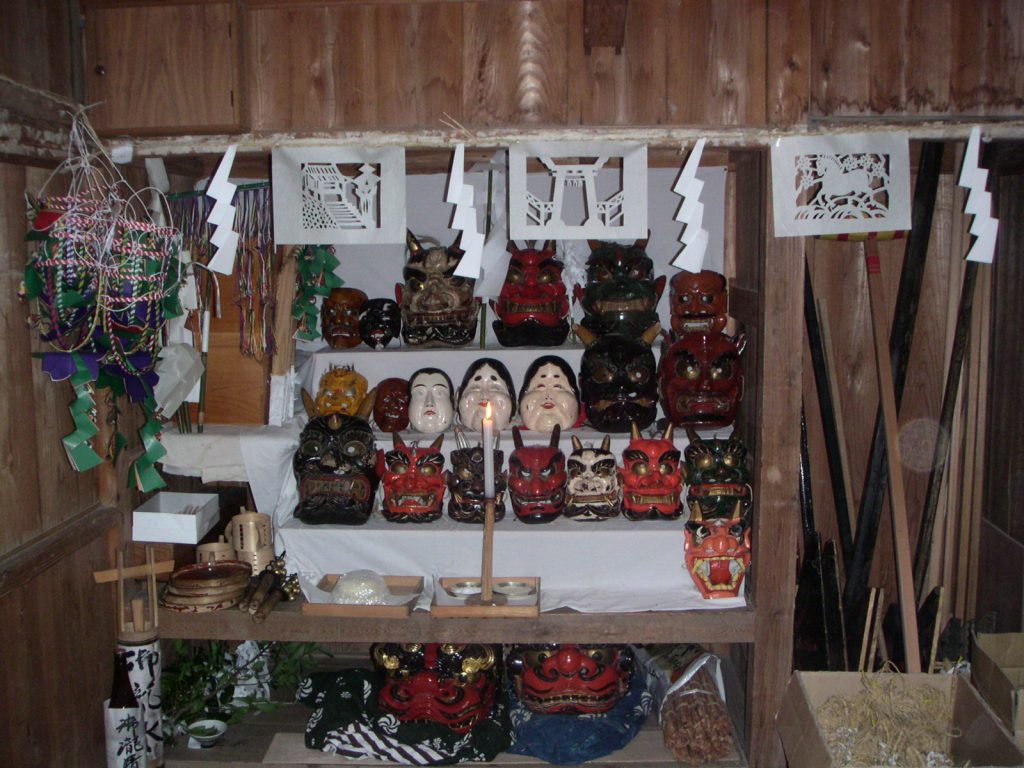
The masked and unmasked dances performed for over twenty hours are meant to purify the land and to ward off evil spirits. They can also be considered prayers for bountiful crops, for the peace and security of the village, and the good health of its inhabitants. Kami and people enter into close communion, carried away by the soft sound of the flute and the vigorous drumbeats. The presence of the kami is shown here through the canopies. Besides the big colourful canopy, many little canopies are given as offerings by the parishioners who had that year a new house built or a newly born baby. In order to transmit the prayers addressed to kami, people use rituals and dances.
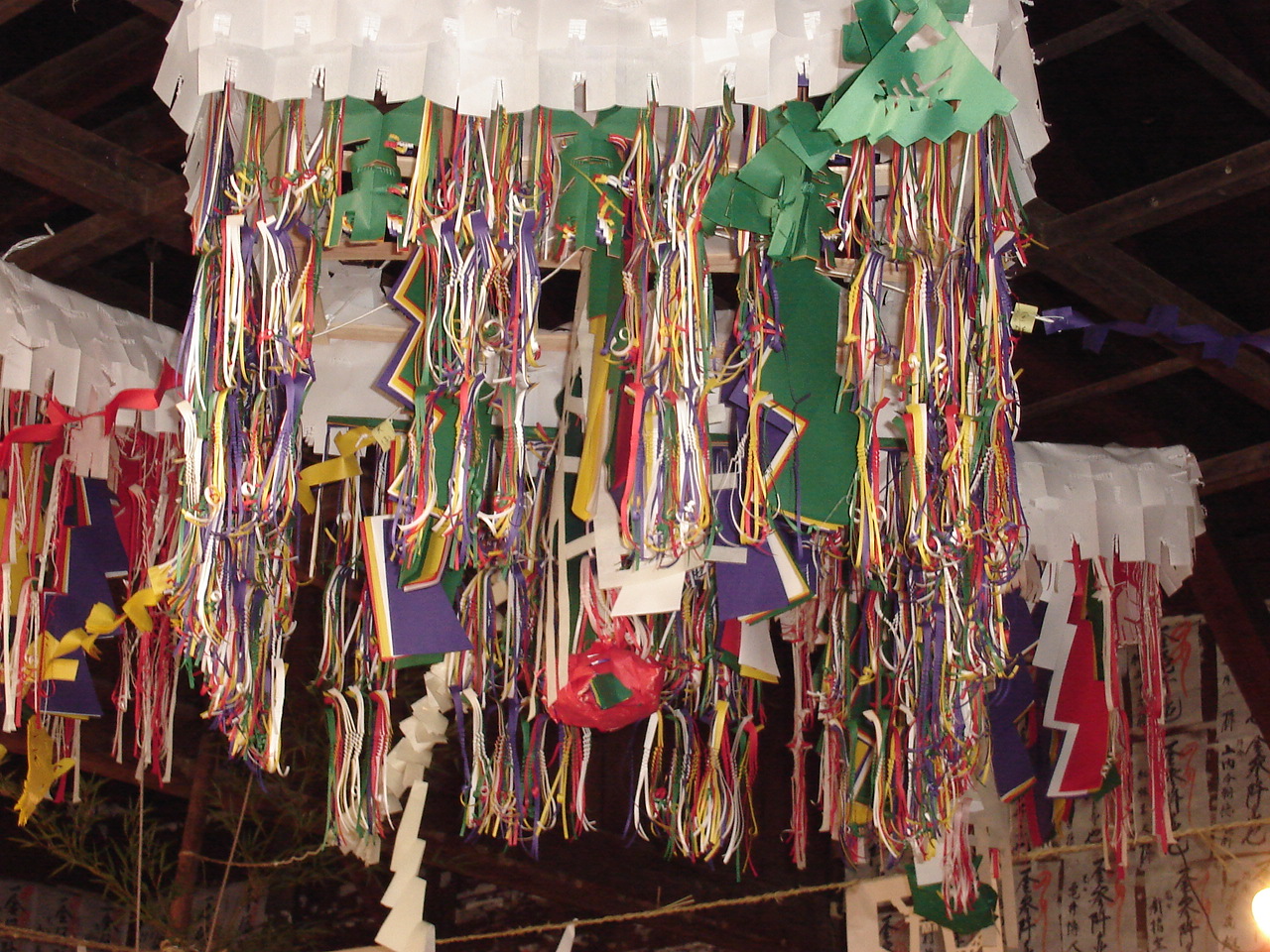
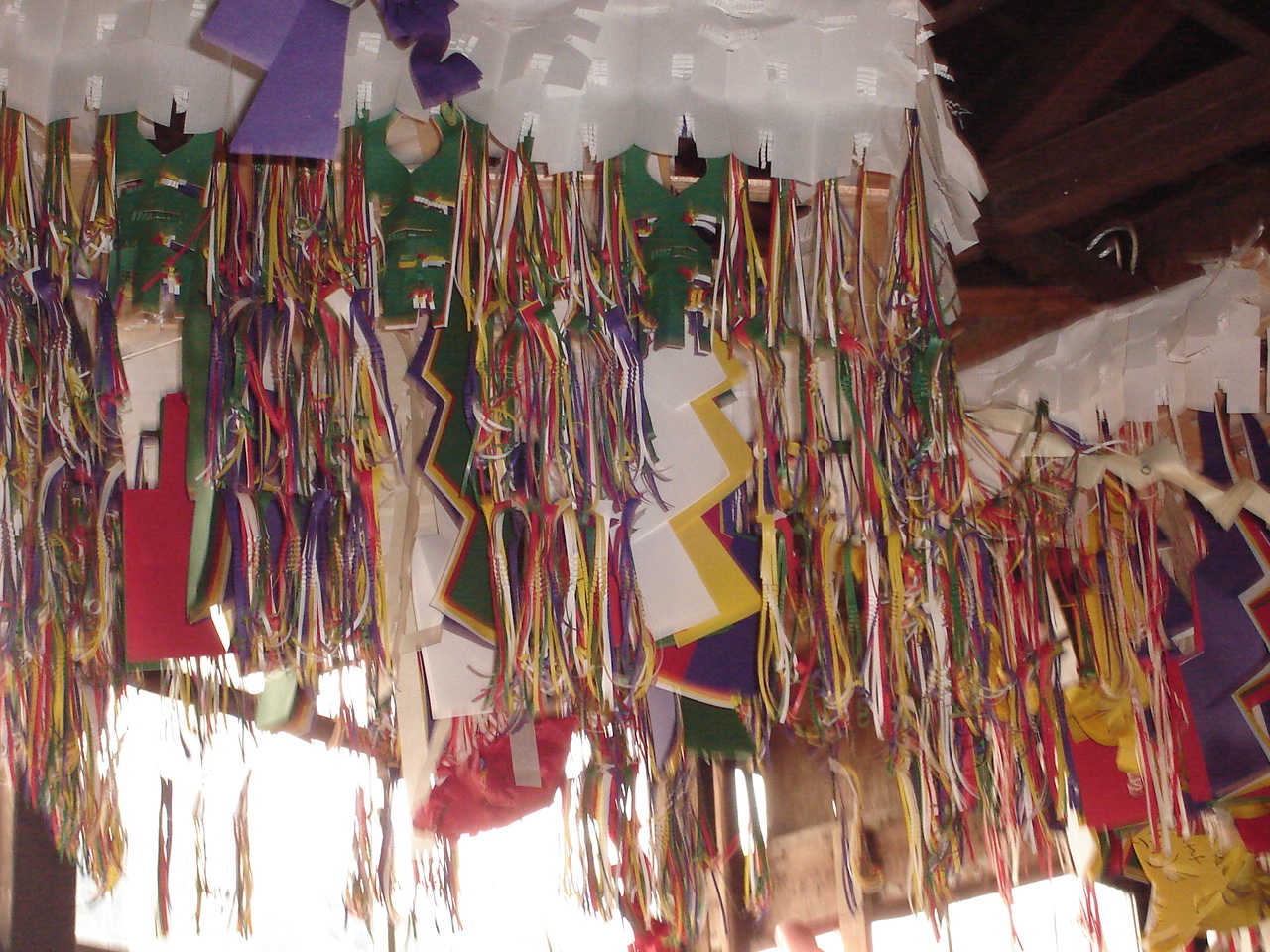
One of the most important features of Hana-matsuri is the entertainment of both deities and spectators through demon’s dances. Some specialists consider the demons here to be scapegoats meant to take over all the impurities, whilst others believe them to be both mountain gods evolving from local ancestral spirits and earthly gods with divine names. Irrespective of their origin and manifestation, Hana-matsuri as a ritual meant to renew the life forces of the community during the cold winters is of a paramount importance.
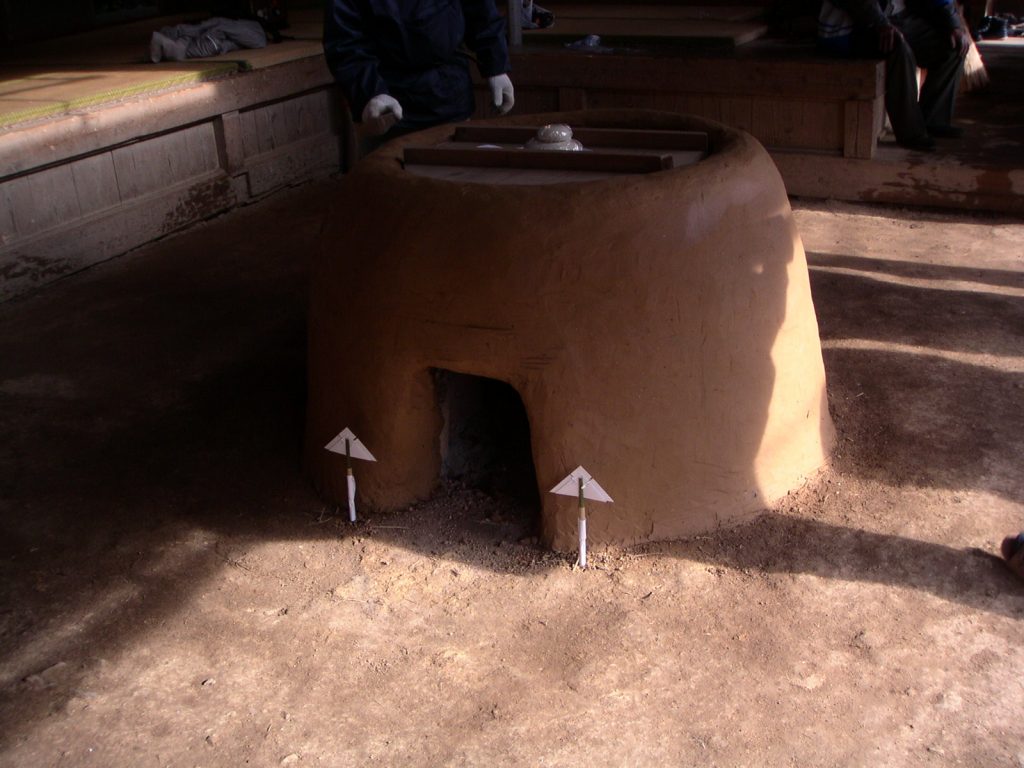
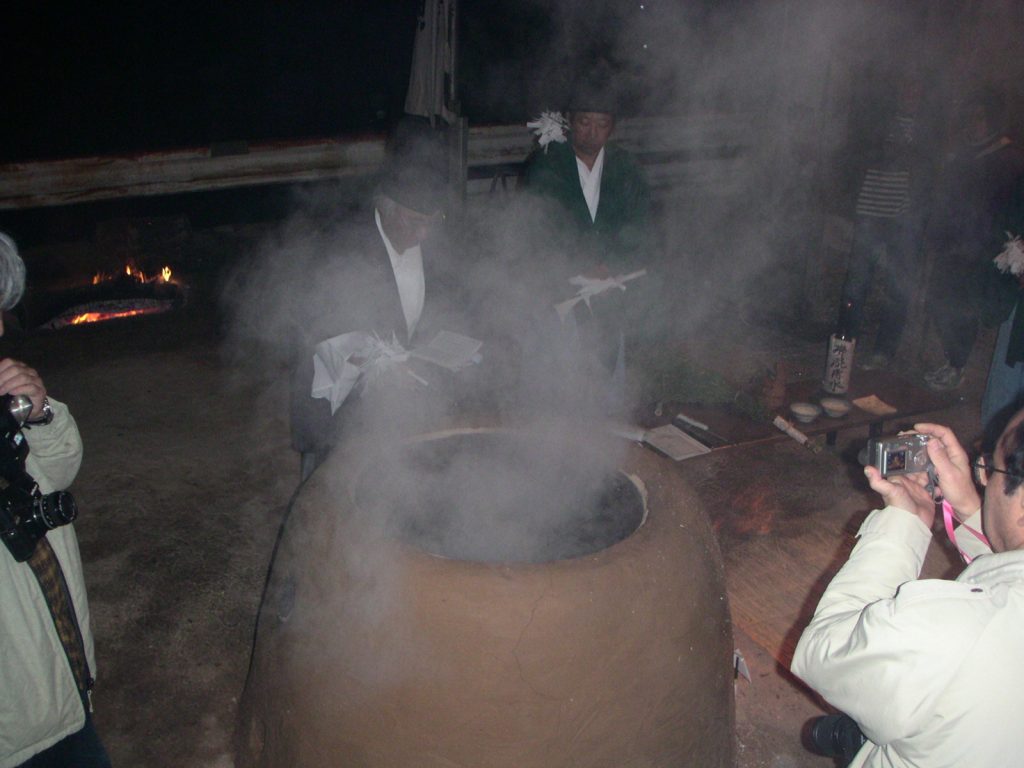
The original form of Hana-matsuri is Yudate-kagura, pointing out the belief in two of the five essential elements of the universe: water and fire. It is a special purifying ritual in which water is boiled in a large cauldron inside the place where yudate (“purification through hot water”) takes place. The purifying role of the boiling water is increased by having been fetched from the waterfall, a place that had been previously made sacred through ritual.
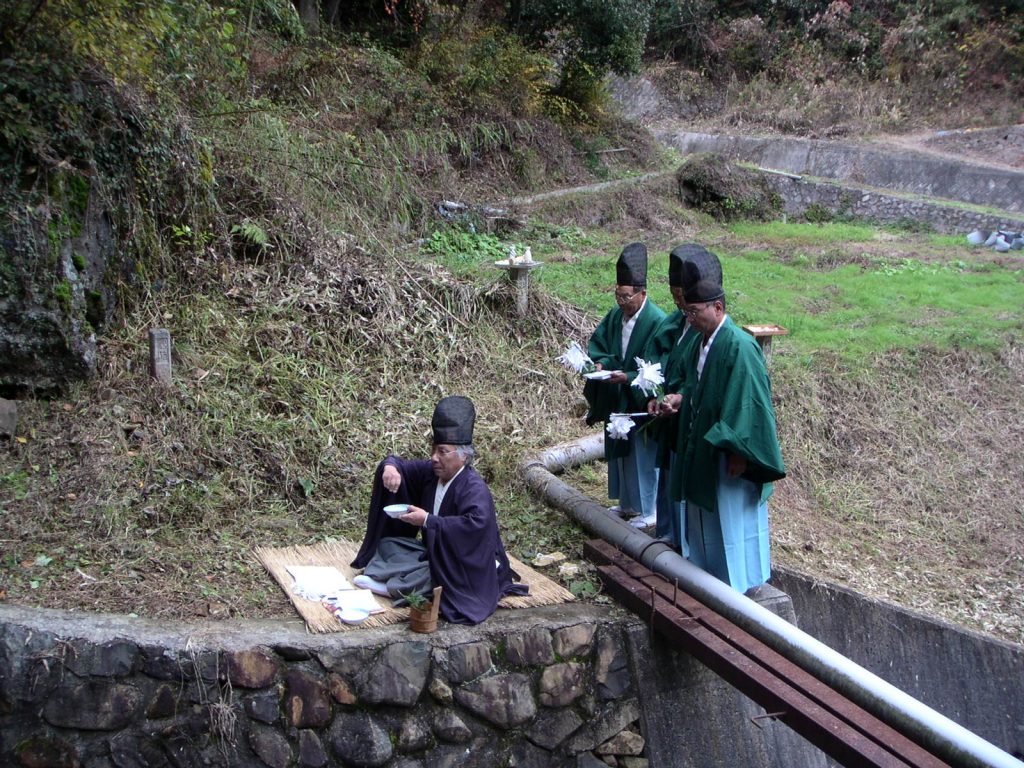
The full repertoire of Hana-matsuri contains as many as forty dances, but I will focus upon only some of the most representative, as it would take tens of pages to describe them all, even though summarily.
Jigatame (“Fortifying the Earth”) means revitalizing the force of the Earth. It is performed in an attempt to ward off evil and wake up the dormant fertility spirits.
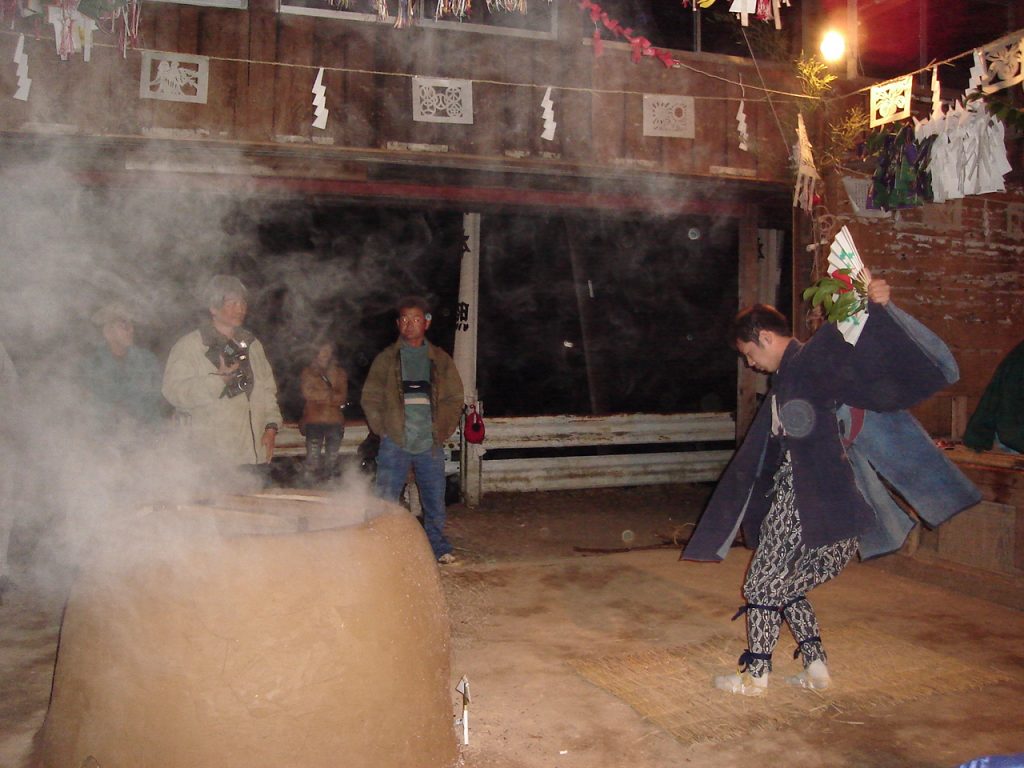
Hana-no-mai (“the Dance of the Flowers”) brings on to the improvised stage in front of the cauldron children dressed in local traditional costumes and wearing red headbands. While dancing for about an hour, they change the headbands to a special type of headgear and hold bells, fans, and/or kegs. They enter and leave the stage riding the shoulders of adults lest they should get in touch with the profane space around. Being pure by their very nature, they are considered the most suitable beings to entertain the kami. At the same time their dance stands for a rite of initiation and one cannot overlook the fact that they might also become valuable preservers of the tradition they get acquainted with in early childhood.
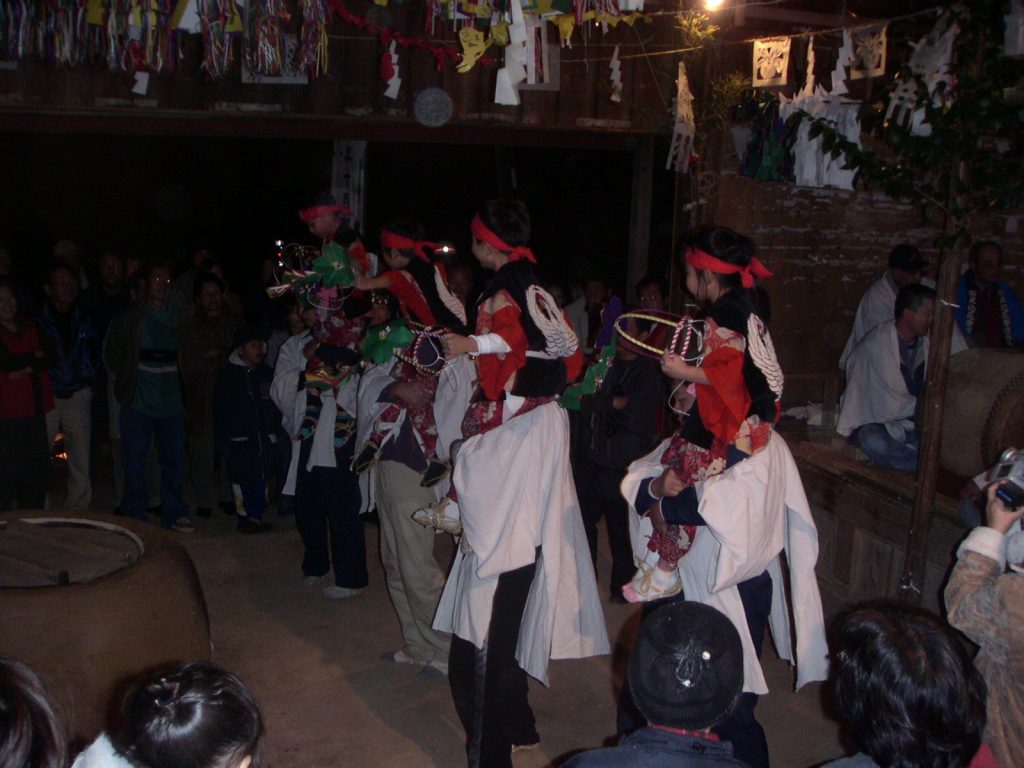
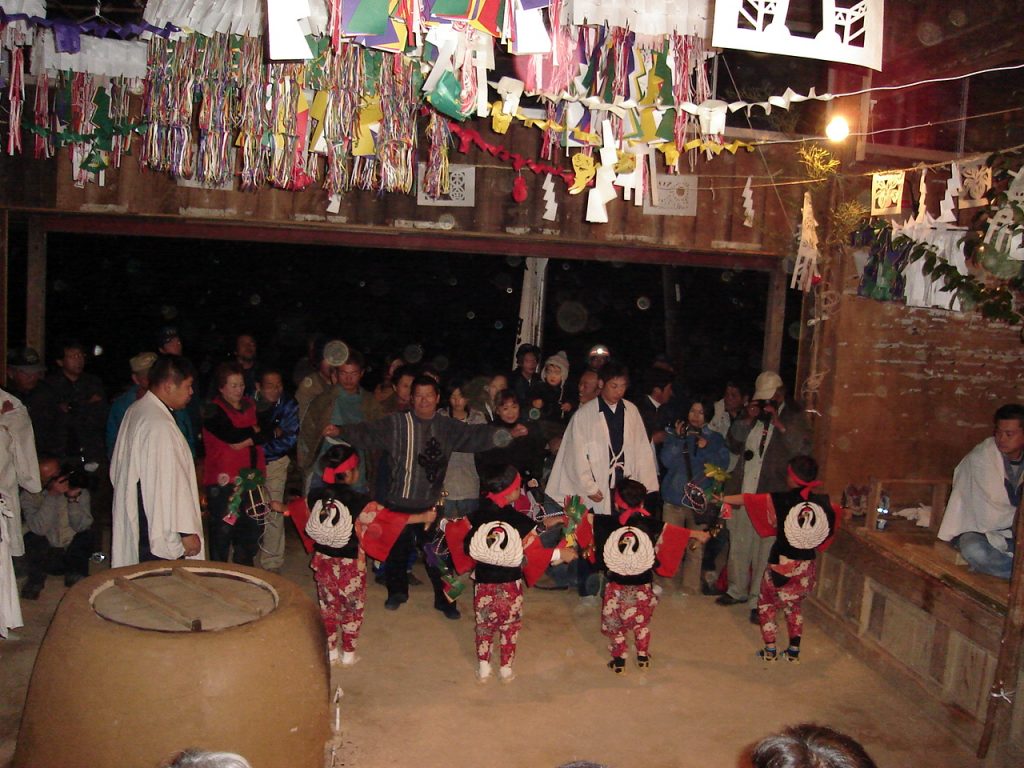
The two demons called Yama-mi-oni (“the Demon who Looks around the Mountain”) and Yama-wari-oni (“the Demon Who Splits the Mountain”) have fearsome appearance, their role being “to cut the mountain” with the axes they brandish. The mountain is in fact the cauldron, looked upon as the centre of the divine activities around which the dances are performed and which needs thorough purification. The standing people make up a tight circle around the cauldron, often encroaching upon dancers. The atmosphere becomes really exciting and the community gives the impression of breaking the rules and violating the taboos. At least, it was what I felt, knowing the Japanese did not amuse themselves so wildly in public.

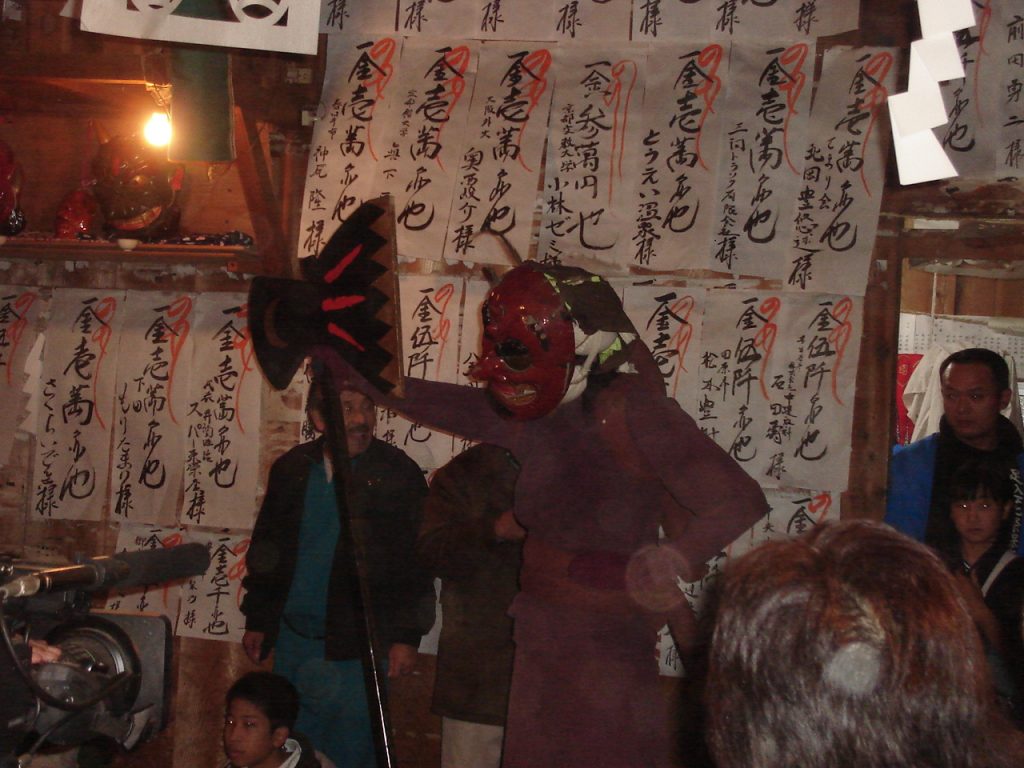
Little by little I came to judge the whole festival as a way of unfettering the energies accumulated throughout the year, my opinion being supported by the fact that the ritual violations showed up only at night – the most favourable time for nonconformist and even licentious behaviour.
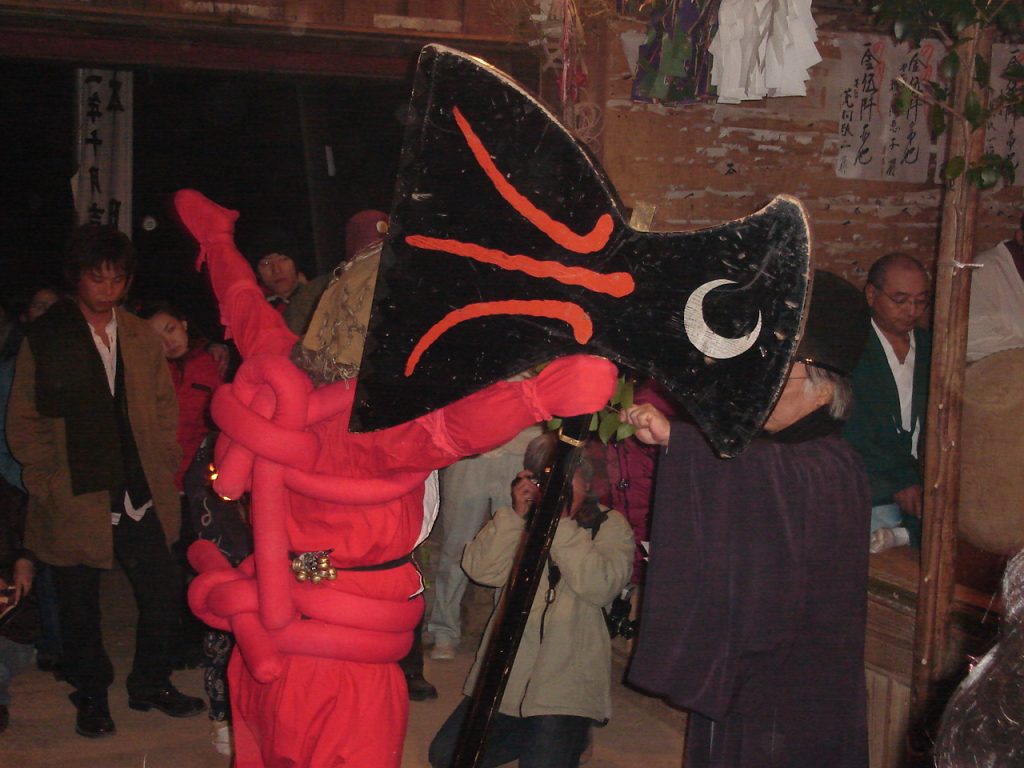
When the huge red demon called Sakaki-oni (“the Demon with a sacred Sakaki Branch”) appears, any noise dies down. He is regarded as an important deity who brings about rich harvest, health and prosperity for the villagers. He also purifies the place with his huge magic-like strides and by brandishing his axe in all directions.
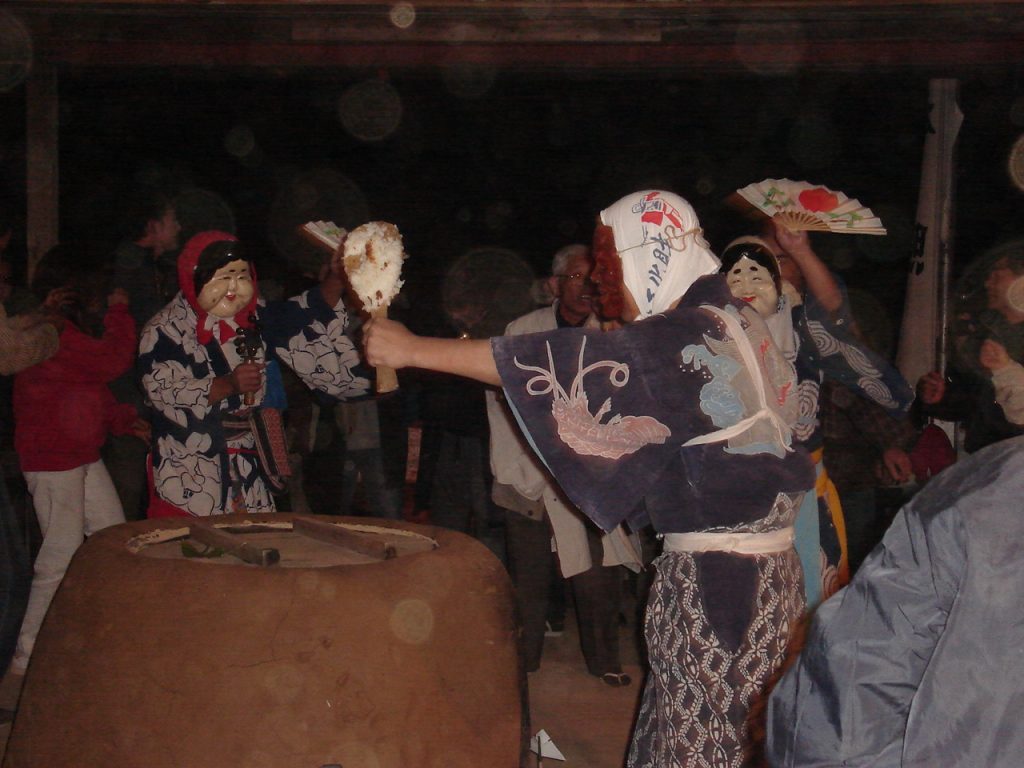
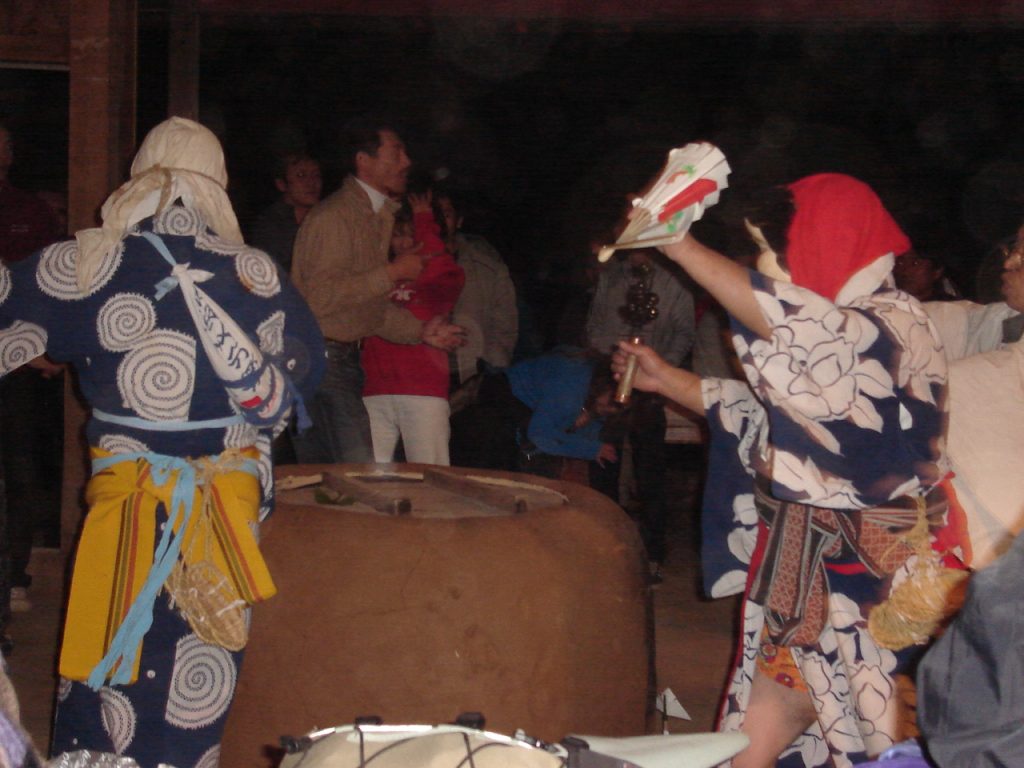
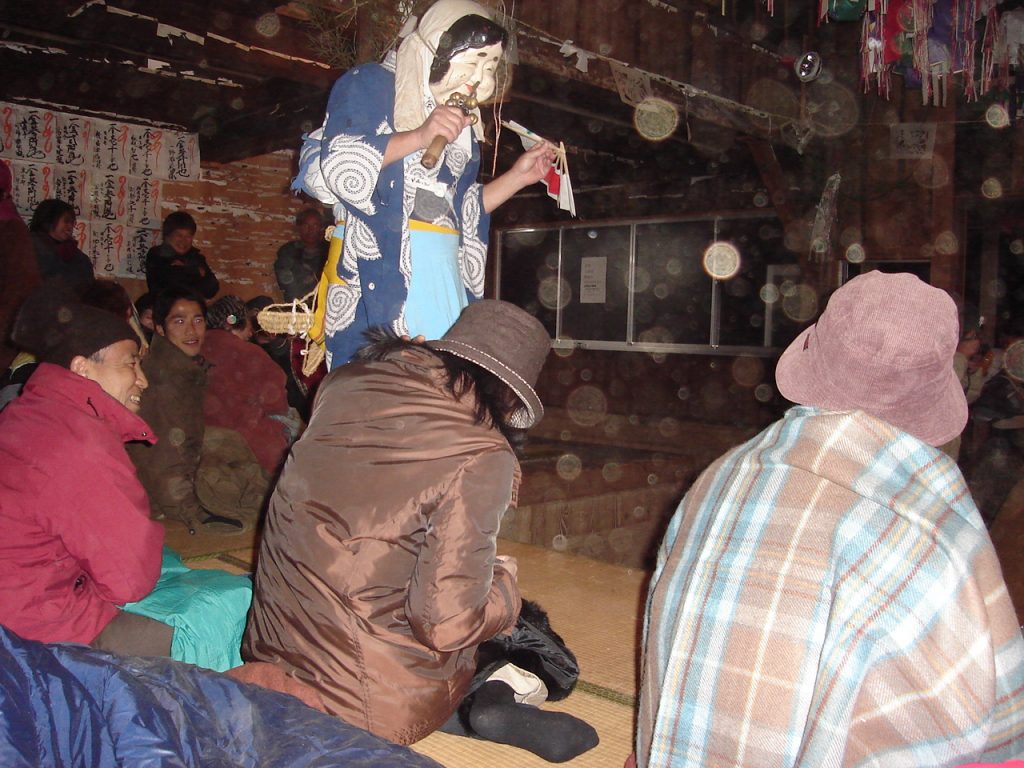
One of the most exciting part of Hana-matsuri features Meshinuri and Misonuri who carry little wooden bats tarnished with rice paste and miso paste (fermented soya bean), respectively. They chase people trying to sully their faces without minding anything and anybody. Everybody pretends to avoid being dirtied, knowing at the same time they are invested, through contagious magic, with healthy and wealthy life. The dance expresses the idea of fertility and rich harvests. Comic gestures and laughter are also important elements, fortifying the energy of those present in the festival. Meshinuri and Misonuri are in no time joined by two or more Okame – men impersonating fat and dull women – who flirt with the spectators. Licentious behavior is related to ancient folk beliefs in which night was perceived as a realm of the mysterious and supernatural when droll gestures were allowed without being sanctioned. Such erotic elements are thought to stand for procreation. Even though they lose their primary significance, they get through performance a new spiritual profile, outlining a certain type of relationship amongst the members of the community. Their cultural dimension as a ritual is very important, the ritual itself being indispensable to the traditional way of life. Without it, people would forget how to enjoy an event and how to create and develop their existence imbued with meaning.
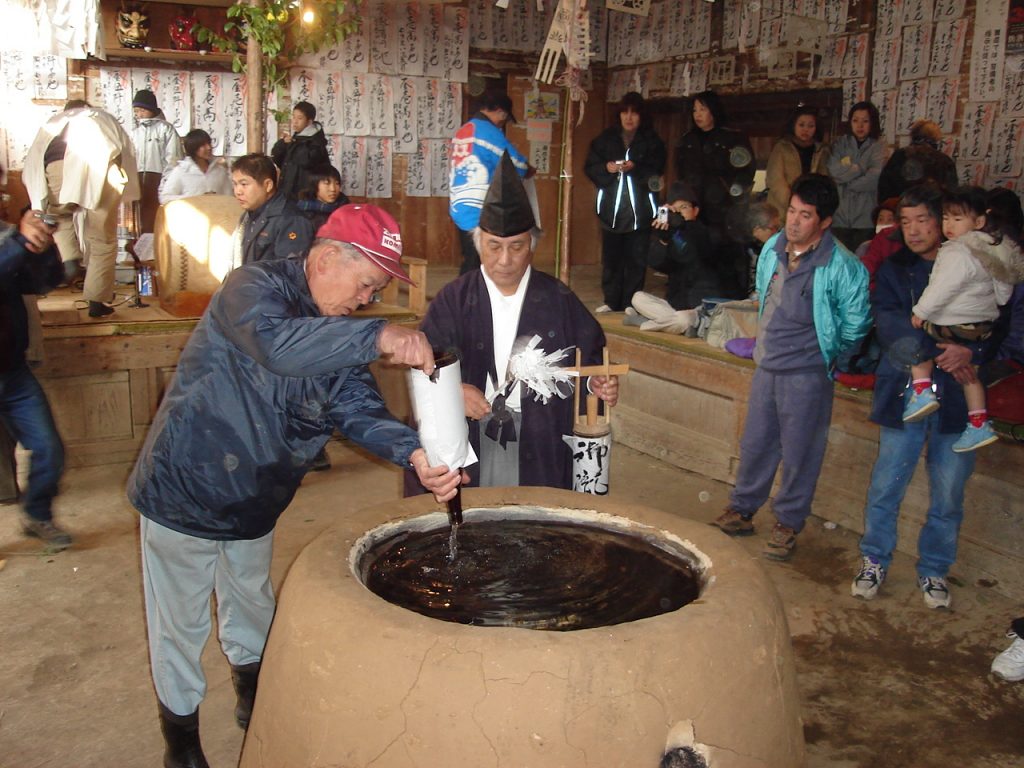
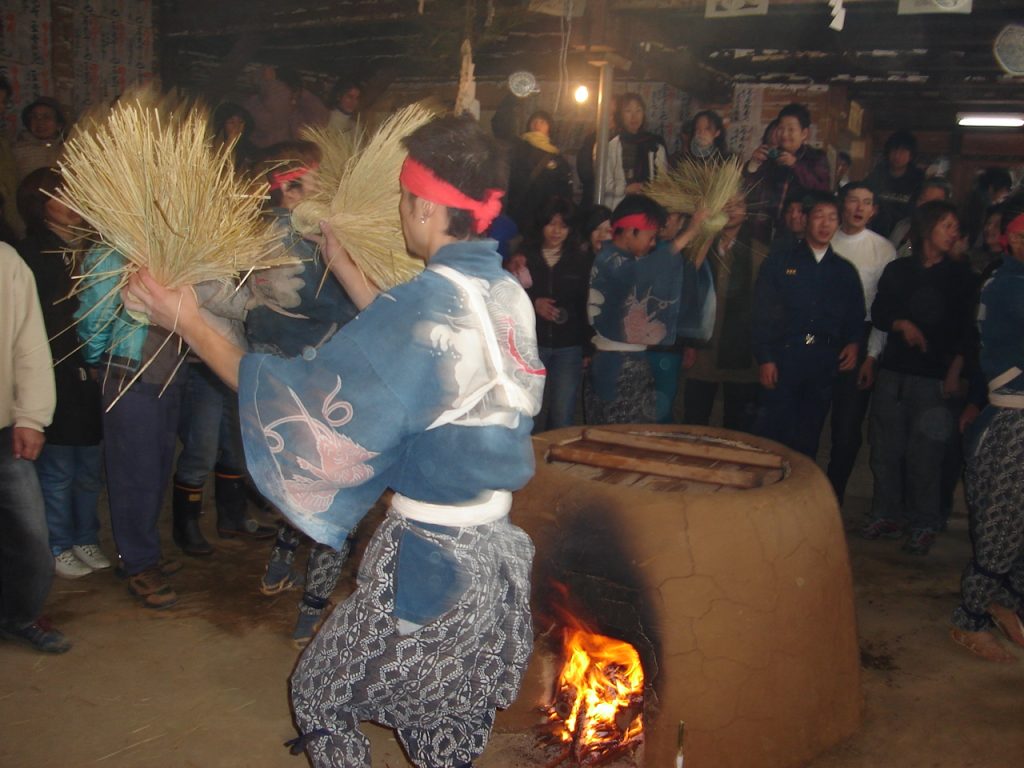
In the morning the fire is kindled again and the water in the cauldron boils for the climactic moment of Hana-matsuri. Four young men dressed in typical attire spring out on to the improvised stage, with straw bundles in their hands. They dance elegantly but energetically for an hour, and the drum beats get faster and faster when the young men dip their straw bundles into the boiling water and randomly sprinkle drops of hot water around them, without minding anybody. People scream and flee the flying hot drops but only after making sure they have been touched. Everything around is soaked, but everybody believes that hot drops mean health throughout the ensuing year, the purification of the community and of the whole microcosm being thus achieved.
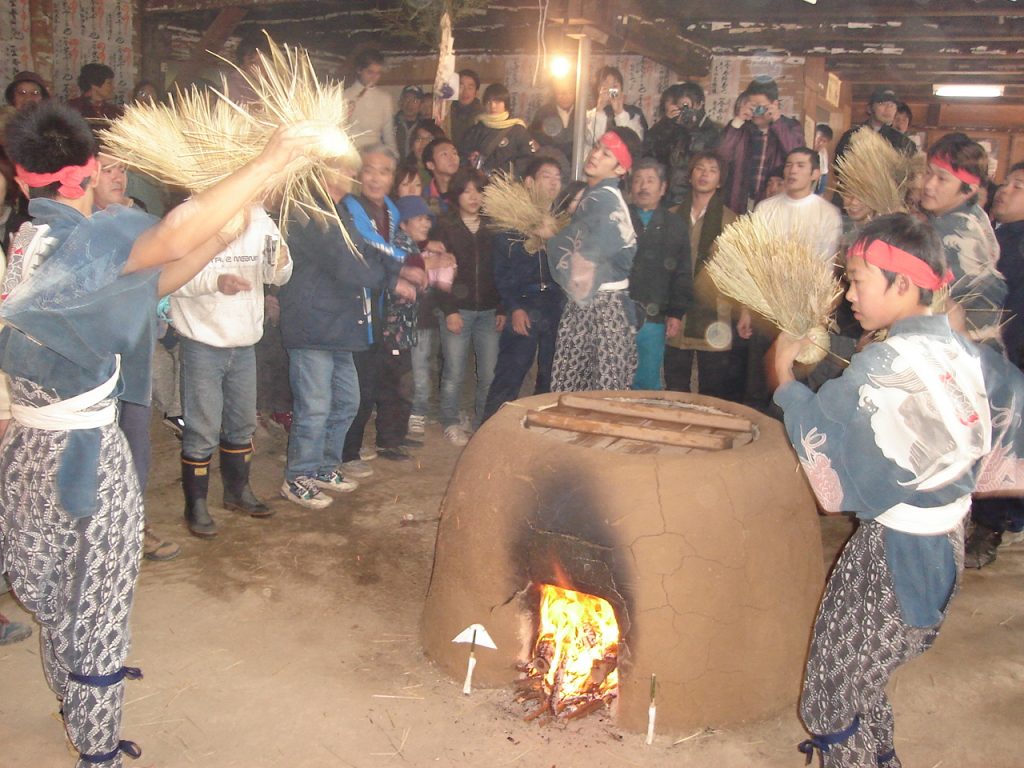
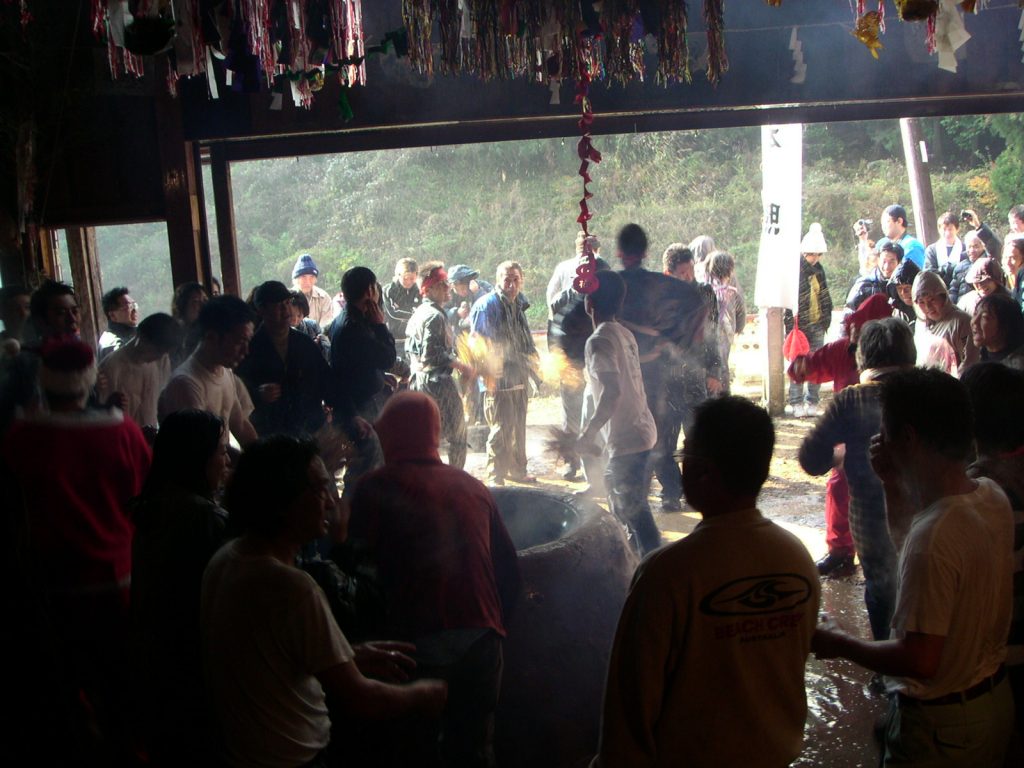
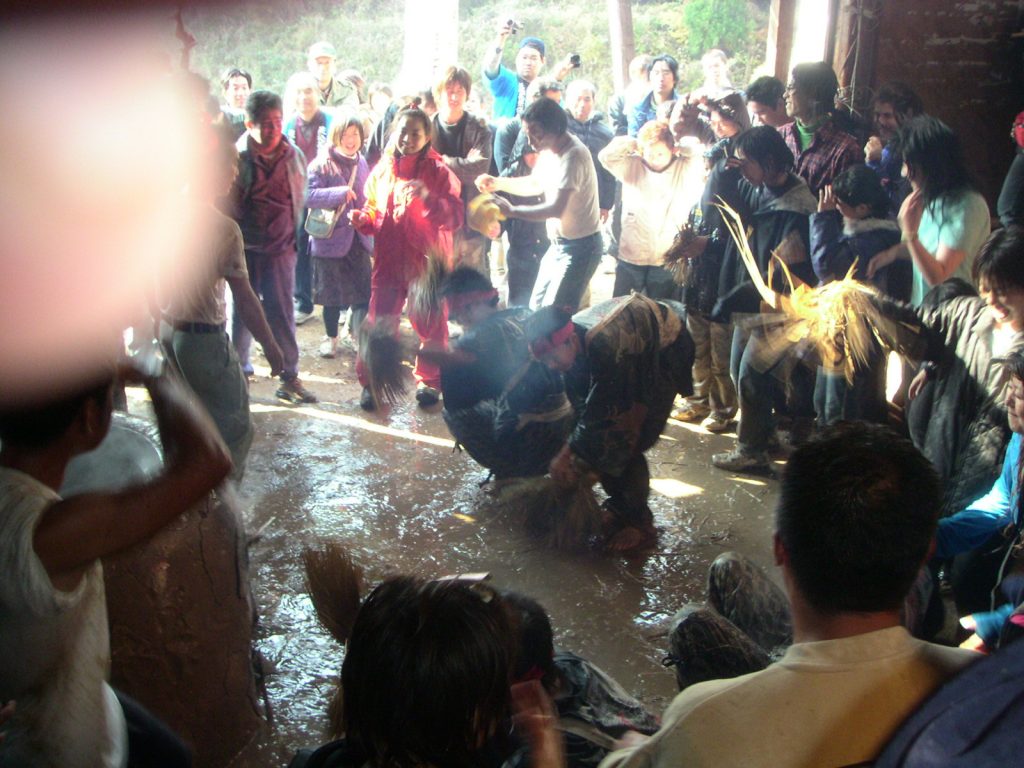
Asa-oni (“the Morning Demon”) attacks the heart of the canopies known as “honey combs”. People scramble for the coins mixed up with the confetti-like five-coloured pieces of paper standing for “the seeds of the Universe”. Both are considered divine rewards.

As with other matsuri, tradition is subjected here as well to eternal re-interpretations and the very potential of being adapted for present situations and feelings accounts for its lasting long. How could it be ignored?
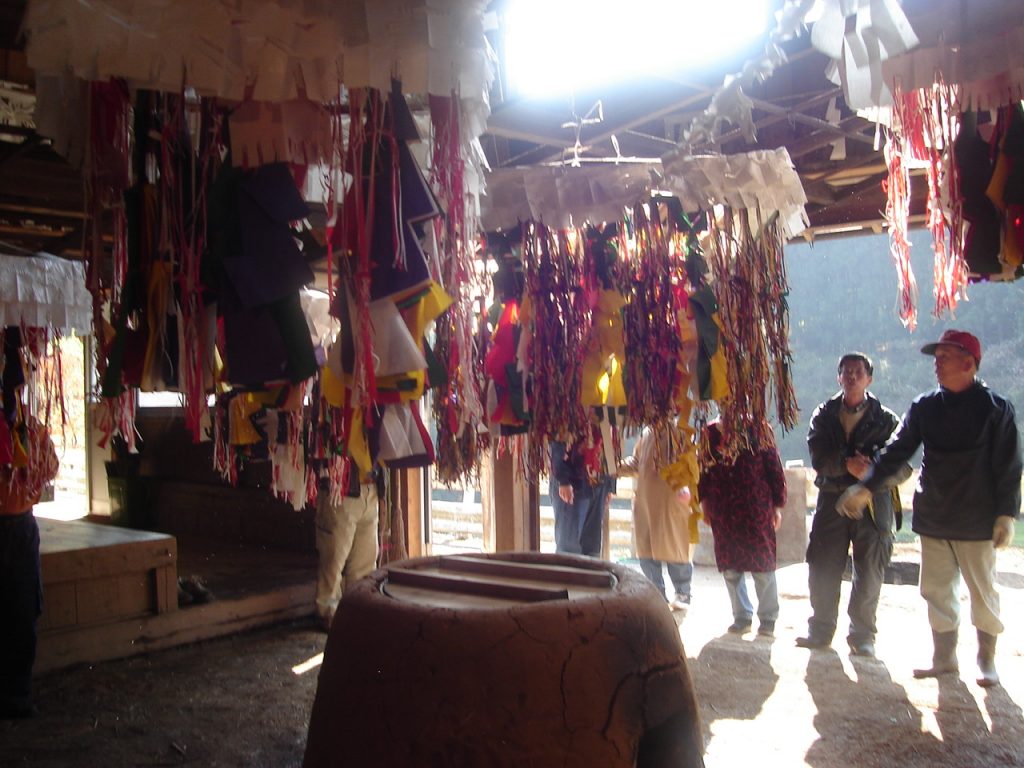

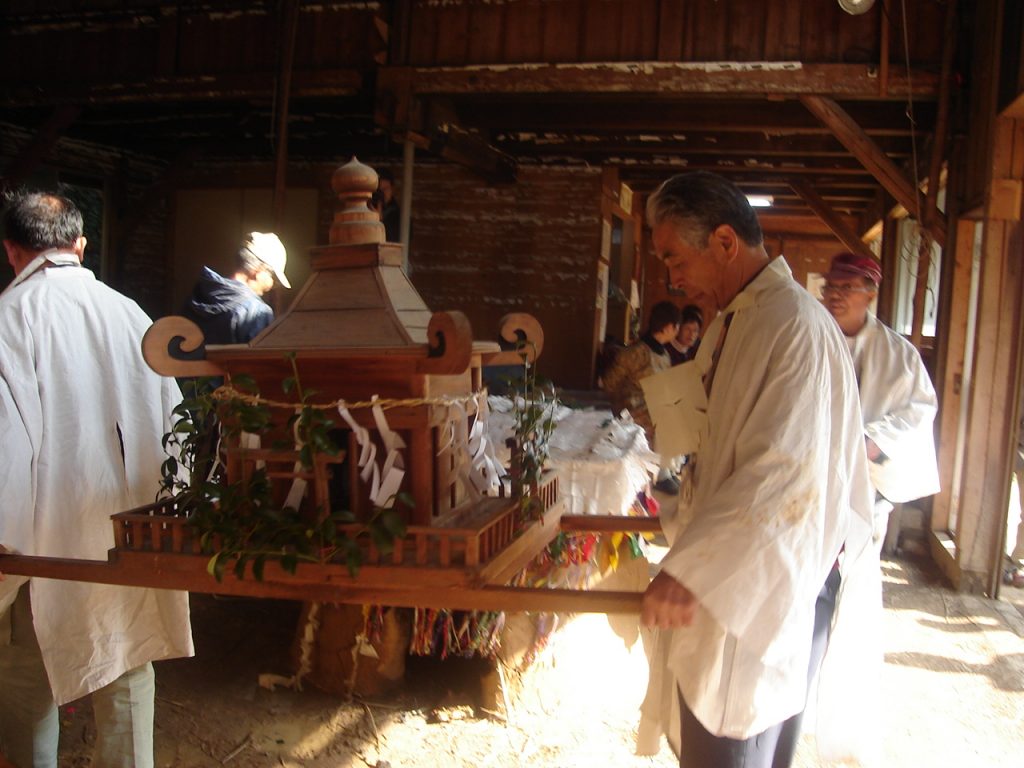
After being entertained, the deities are sent back to their world with proper rites. First of all, the paper figurines which decked the sacred rope around the canopies are taken off and the canopies are let down over the cauldron in order to show to the kami invited to the festival that it is time they returned to their permanent abode. Parishioners take down the portable shrine that contains the spirit of the guardian deity and go round the cauldron to the sound of the flute and of the drum whilst chanting sacred songs as a form of greeting addressed to the departing kami.
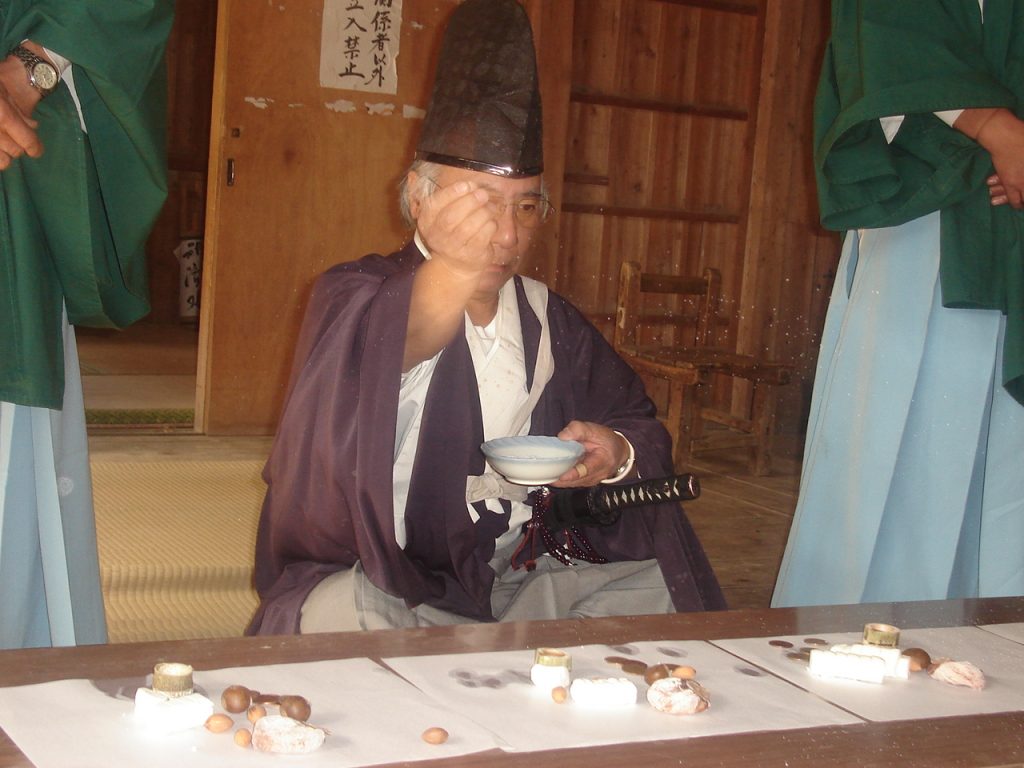
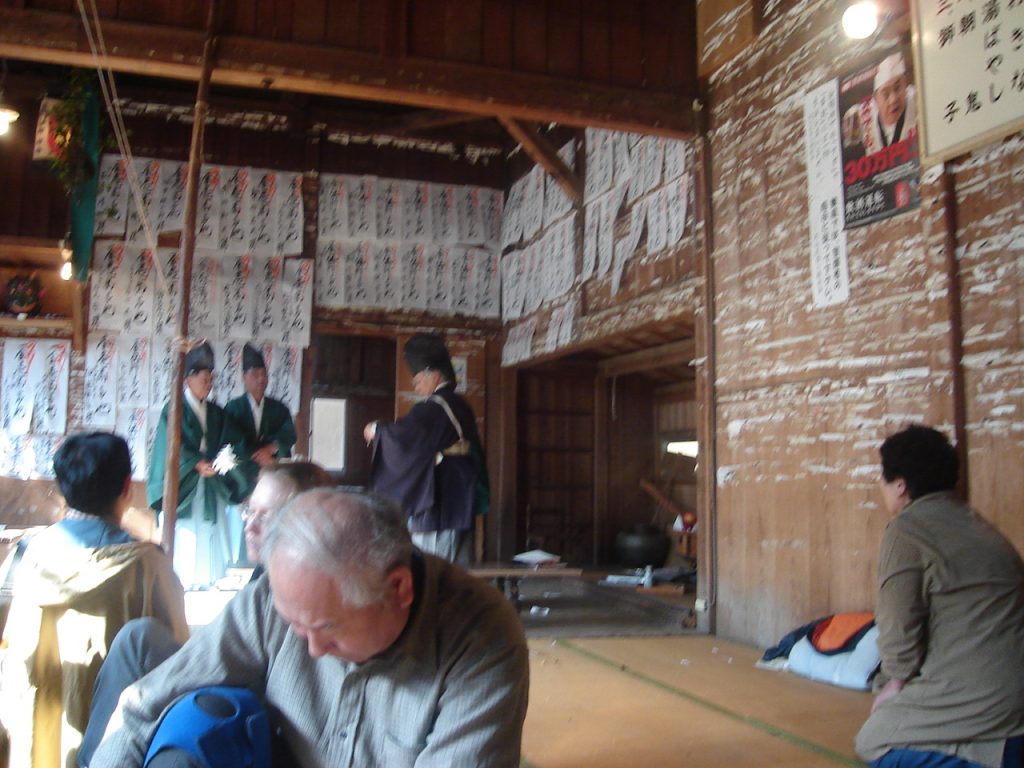
Few people remained to attend the final ritual of food offerings given to the guardian deity. It confirms once again my opinion that the Japanese keep their tradition carefully not so much with a religious purpose in view, but rather in order to meet their spiritual needs. The Japanese are not religious in the same way as other nations are.
Angela Hondru, Letter to Japan
UMC Bucharest 2020
p. 80-87
Photos: Angela Hondru©

